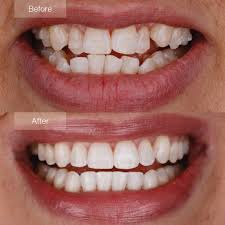Gum Disease Treatment
Gum disease treatment encompasses a range of procedures aimed at addressing inflammation and infection in the gums caused by plaque buildup and poor oral hygiene. The treatment typically starts with a thorough dental cleaning to remove plaque and tartar, followed by scaling and root planing to smooth the tooth roots and promote healing. In more advanced cases, additional interventions such as antibiotics or surgical procedures may be necessary to restore gum health and prevent further damage. Effective gum disease treatment not only alleviates symptoms but also helps prevent tooth loss and maintain overall oral health.
Why Choose Gum Disease Treatment?
Here are four reasons to choose gum disease treatment:
Timely gum disease treatment helps prevent the progression of periodontal disease, which can lead to tooth loss if left untreated. By addressing the issue early, patients can maintain their natural teeth and avoid more complex procedures.
Treating gum disease restores gum health, reducing inflammation and bleeding, which contributes to overall better oral hygiene. This can lead to a healthier mouth and a lower risk of developing other dental issues.
Gum disease has been linked to various systemic health problems, including heart disease, diabetes, and respiratory conditions. Treating gum disease can help mitigate these risks and promote overall health.
Effective gum disease treatment alleviates discomfort and pain associated with gum inflammation, allowing individuals to enjoy their daily activities, including eating and speaking, without discomfort or embarrassment.
How Does Gum Disease Treatment Work?
Initial Evaluation
The dentist conducts a comprehensive examination of the gums, including probing to assess the depth of gum pockets and determining the severity of gum disease. This evaluation helps to create a personalized treatment plan.
Professional Cleaning
A thorough dental cleaning is performed to remove plaque and tartar buildup from the teeth and along the gum line. This step may involve scaling, which removes hardened deposits, and polishing to smooth the tooth surfaces.
Scaling and Root Planing
For more advanced cases, scaling and root planing are performed to clean below the gum line and smooth the roots of the teeth. This procedure helps to eliminate bacteria and allows the gums to heal and reattach to the teeth.
Follow-Up Care and Maintenance
After initial treatment, patients are scheduled for regular follow-up appointments to monitor gum health and perform maintenance cleanings. The dentist may also provide guidance on proper oral hygiene practices to prevent recurrence and ensure lasting results.
Hear from Our Satisfied Patients

“I can’t express how grateful I am for the gum disease treatment I received at ALBGTC. The staff was incredibly knowledgeable and compassionate, taking the time to explain each step of the process. After my treatment, my gums felt healthier, and the pain I had been experiencing is gone! I can now enjoy eating and smiling without worry.”
– Emily R.
“ALBGTC changed my outlook on dental care with their gum disease treatment. I was initially nervous about my condition, but the team was supportive and made the whole experience comfortable. After a thorough cleaning and follow-up care, my gums have never felt better! I highly recommend their services to anyone experiencing gum issues.”
– Daniel K.

FAQs
Common signs of gum disease include swollen, red, or bleeding gums, persistent bad breath, loose teeth, and gum recession. If you notice any of these symptoms, it’s important to consult a dentist as soon as possible.
Gum disease is diagnosed through a comprehensive dental examination, which includes checking the health of your gums, measuring pocket depths around teeth, and evaluating any bone loss through X-rays if necessary.
Most patients experience minimal discomfort during gum disease treatment. Local anesthesia is often used during procedures like scaling and root planing to ensure comfort. Post-treatment, mild soreness can be managed with over-the-counter pain relief.
Maintaining good oral hygiene practices, including regular brushing and flossing, visiting the dentist for check-ups, and quitting smoking, can significantly reduce the risk of developing gum disease. Additionally, following any specific care recommendations from your dentist can help maintain gum health.


